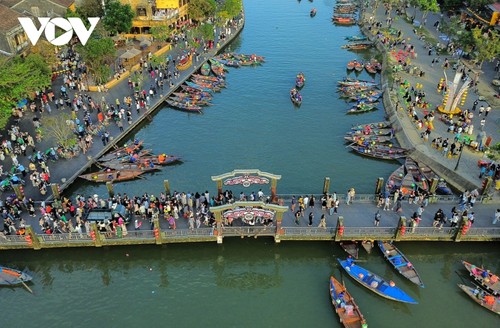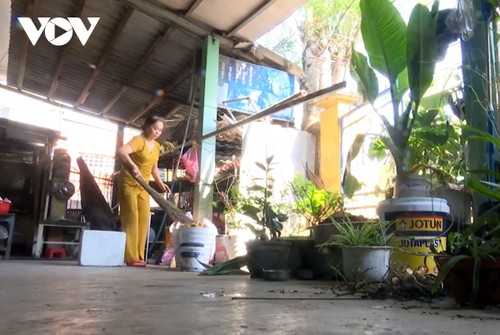 A big volume of waste is discharged every day as Hoi An welcomes an increasing number of tourists. (Photo: Long Phi/VOV) A big volume of waste is discharged every day as Hoi An welcomes an increasing number of tourists. (Photo: Long Phi/VOV) |
Hoi An City is piloting a regulation on prices for collecting, transporting, and treating household solid waste before applying a waste fee plan based on volume before 2025 in line with the Law on Environmental Protection.
Specifically, it categorizes that recyclable and reusable waste to be self-collected and processed at home; food waste to be stored in clear, white waste bags with blue letters; and other household solid waste to be stored in clear, white waste bags with black letters.
Since implementing the program, households buy plastic bags of 10 liters, 15 liters, 20 liters, and the largest 40 liters. Based on the current average waste fee of 30,000 VND per household, each household instead of paying fee will buy plastic bags worth 30,000 VND. Accordingly, each household can buy 16 bags of 10-liter, 6 bags of 15-liter, or 4 bags of 20-liter. Garbage collection trucks will collect waste bags at residential areas on certain days.
“We should sort waste at source to minimize waste discharged to the environment. It’s costly to transport waste to the dump field,” Nguyen Thi Y, a resident in Cam An ward, said.
 Since 2023, Mrs. Nguyen Thi Y has bought plastic bags to sort organic and solid waste at home. (Photo: Long Phi/VOV) Since 2023, Mrs. Nguyen Thi Y has bought plastic bags to sort organic and solid waste at home. (Photo: Long Phi/VOV) |
Nguyen The Hung, Vice Chairman of Hoi An city People’s Committee, said that waste sorting at source will help reduce 30% of landfilled waste and contribute to the circle economy to turn waste into resources. It’d be an effective solution for Hoi An to develop a cultural city and sustainable tourism.
“When we collect waste fee based on discharged volume, who discharge less, pay less and who discharge more, pay more. It’s fair. People will change their habit,” said Mr. Hung.
Since piloting the model in one ward to learn from experience, Hoi An city has recorded initial success. Although waste calculation method will have to be adjusted, it will be a future trend to awake people's awareness of environmental protection.